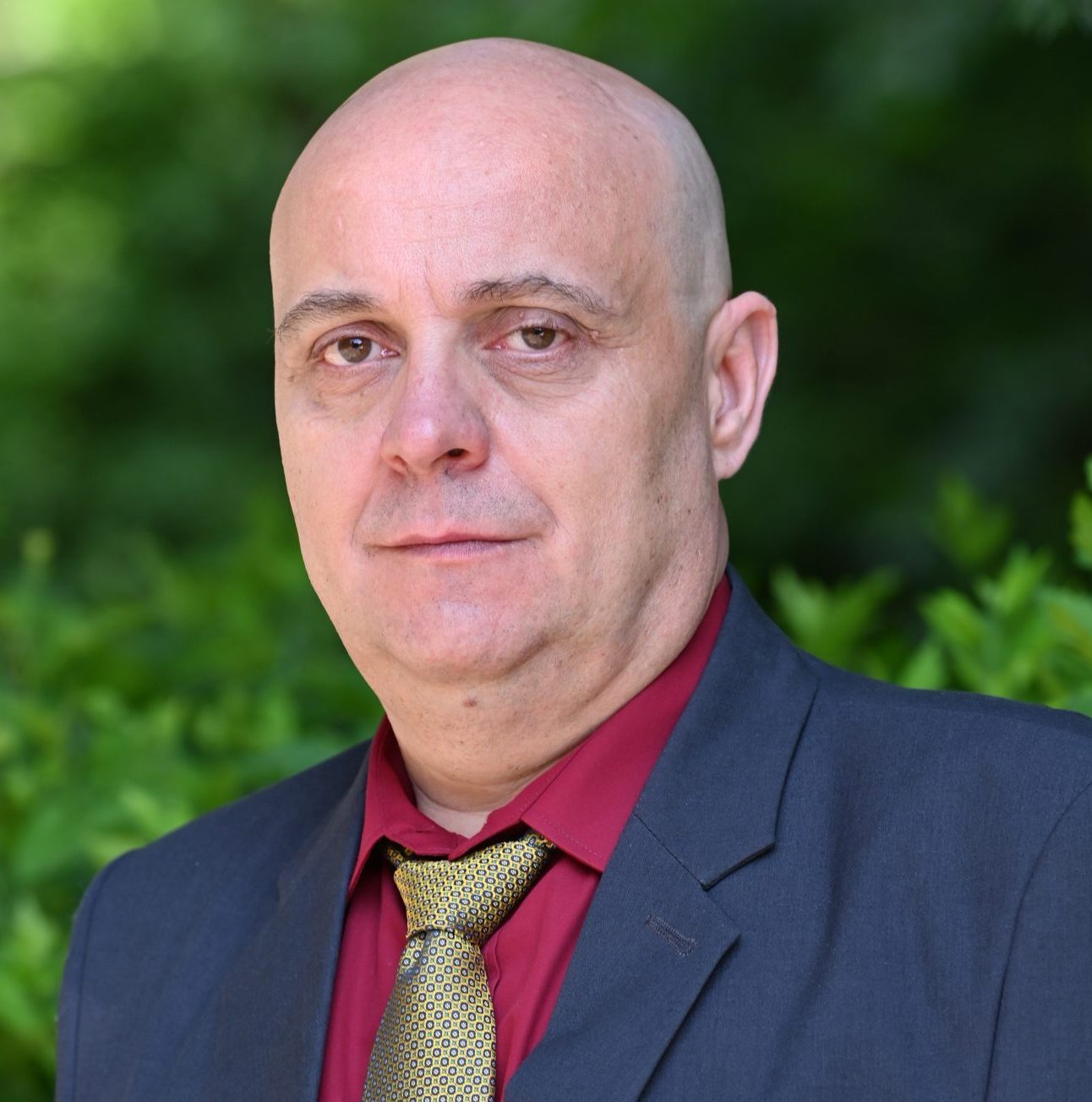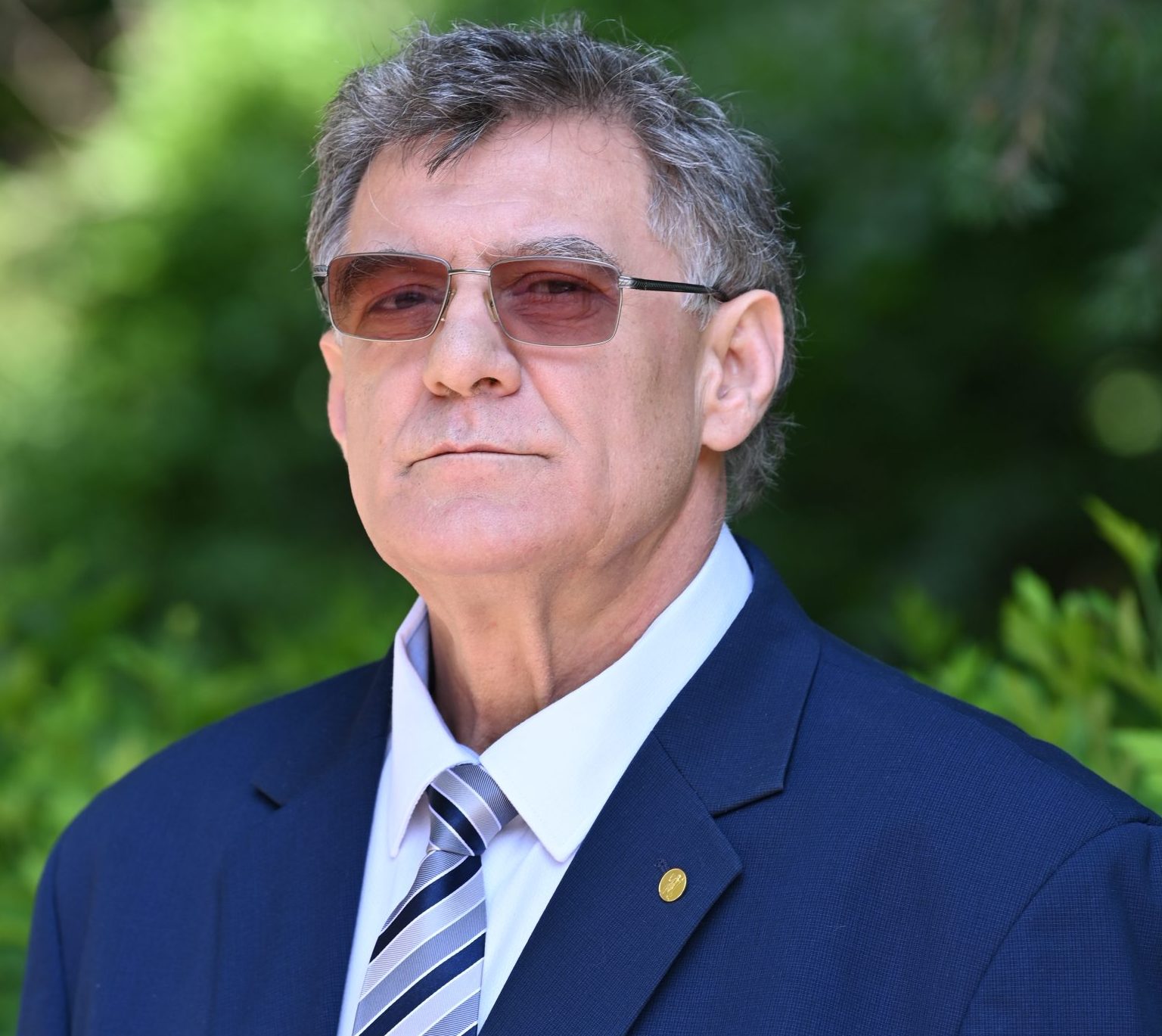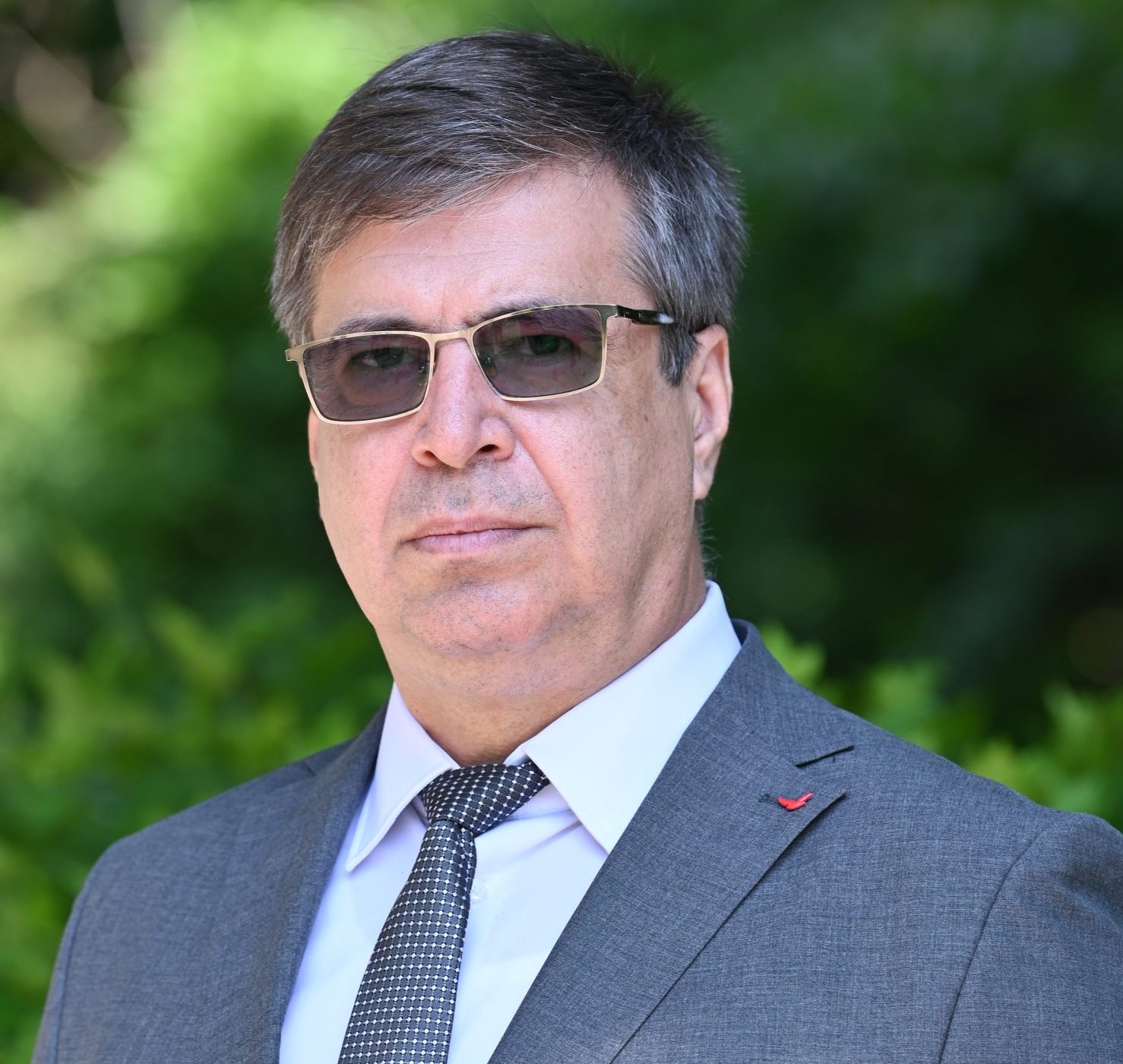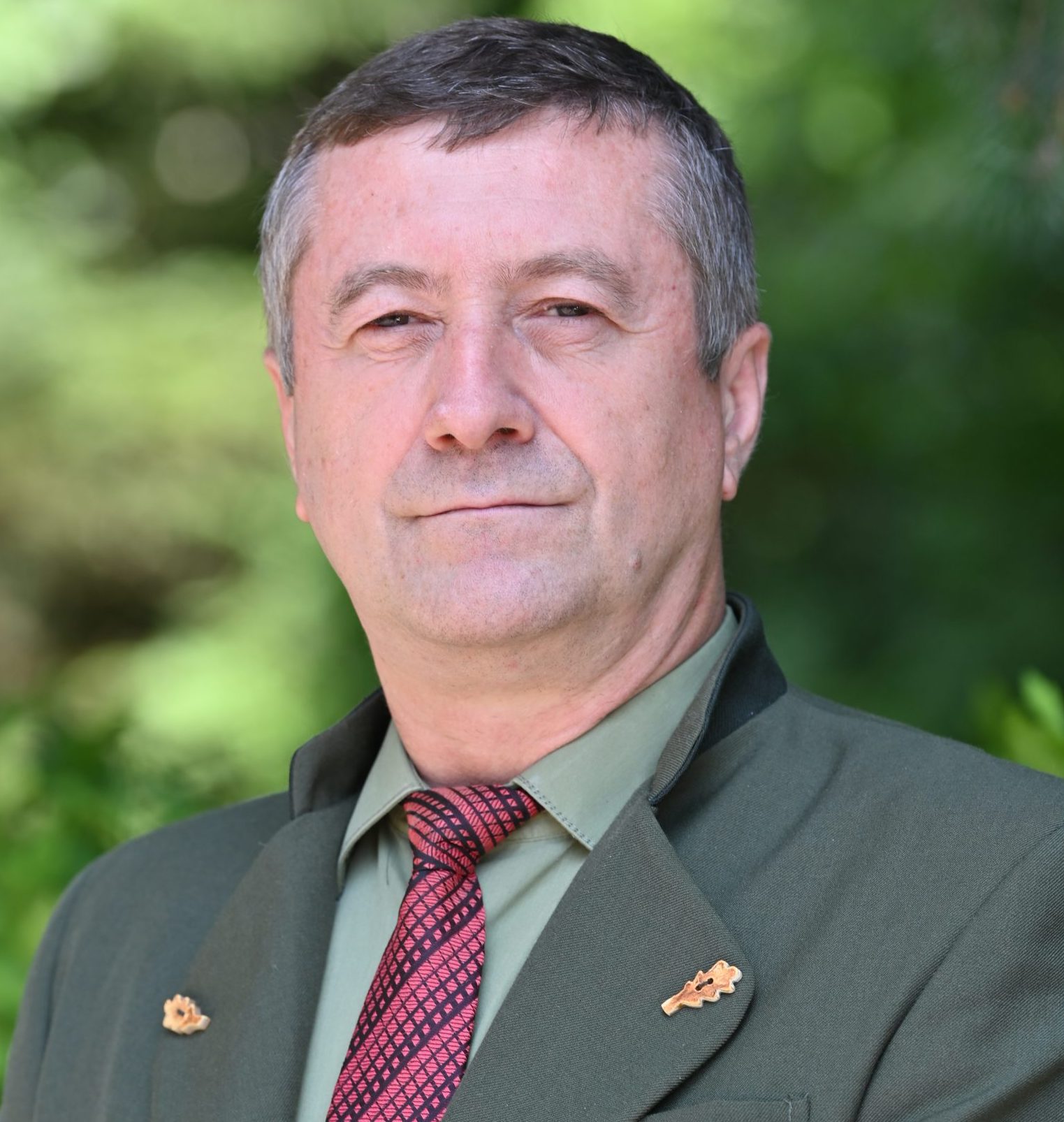Short history
The institutionalization of forestry scientific research in Romania begins with the establishment in 1933 of the Institute for Research and Experimentation in Forestry (ICEF) through the Journal of the Council of Ministers no. 561 of May 16 and published in the Official Gazette no. 115 of May 22, 1933, fulfilling in this way an old desire of the forestry corps in our country. On July 19, 1933, in the conference room of the “Progresul Silvic” Society, Eng. Marin Drăcea was appointed as director of ICEF, and Petre Ioan and I. Moldovanu as general director and deputy general director of CAPS, respectively. The first headquarters of ICEF is in Bucharest, 1 Clopotarii Vechi str., until 1948 when it moves to Sos. Kisselef no. 55-65.
In 1976, the Institute for Research and Development in Forestry (ICAS) through Law no. 27 of April 15, published in the Official Gazette no. 35 / April 23, 1976, regarding the “National Program for the Conservation and Development of the Forest Fund in the period 1976-2010”, was territorially reorganized into 6 large forest areas (Moldova, Danube-Dobrogea Plain, Southern Carpathians and Subcarpathians, Banat-Mureşul Inferior, North-West Transylvania, South-East Transylvania), within each zone operating an ICAS branch with an Experimental Forest Bypass. On the occasion of this reorganization, the transfer of the headquarters of ICAS to the road also takes place. Stefanesti no. 128, currently Bld. Eroilor no. 128, from Voluntari locality, Ilfov county.
In 2015, ICAS becomes “Marin Drăcea” National Institute for Research and Development in Forestry (INCDS) , and the INCDS Headquarters, “Marin Drăcea”, with headquarters in Bld. Eroilor no. 128, Voluntari locality, Ilfov county, ensures the management of the entire institute for all activities carried out (research, development, experimentation-production) in all its 9 subunits (Stations):
- Research-Development and Experimentation-Production Station (SCDEP) Brașov;
- Research-Development and Experimentation-Production Station (SCDEP) Pitesti;
- Research-Development and Experimentation-Production Station (SCDEP) Bistrița;
- Research-Development and Experimentation-Production Station (SCDEP) Câmpulung Moldovenesc;
- Research-Development and Experimentation-Production Station (SCDEP) Timișoara;
- Research-Development and Experimentation-Production Station (SCDEP) Focșani;
- Research-Development and Experimentation-Production Station (SCDEP) Craiova;
- Research-Development and Experimentation-Production Station (SCDEP) Oradea;
- Experimentation-Production Station (SEP) Ștefănesti.



Organization
From an organizational point of view, the “Marin Drăcea” INCDS Central includes:
- Management of the Institute (General Director, Scientific Director, Development Technical Director, Production Technical Director, Economic Director, Scientific Secretary);
- Research Department (Forest Management Laboratory, Forest Biology Laboratory and Forest Technology Laboratory);
- Development Department (GIS Team, Forest Cadastre and Digital Cartography, National Forest Inventory Service (IFN);
- Experimentation-Production Department (Forest Fund, Guard and Protection Service, Investment Production Office);
- The functional apparatus (Financial Accounting Office, Administrative Supply Office, Internal Audit Department, Procurement Department, Legal Office, Programming, Organization, Human Resources Office, Informatization Department, Internal Prevention and Protection Department, International Relations Office, Marketing and Forest Publishing).
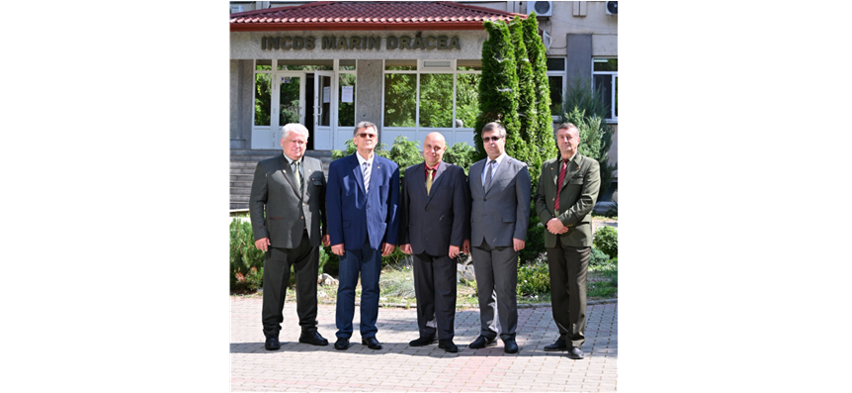
The total number of employees is 161, of which 62 – certified research – development personnel, 43 – technical personnel in the research – development activity, 11 – personnel in the experimentation-production activity and 45 – personnel from the functional apparatus.
Activities
The main research activities carried out in the Institute’s headquarters are specific to a large number of national and international projects in the fields of: dendrometry and forest monitoring, forest ecology, genetics and tree improvement, forest protection, silvotechnics, forest management, ecological reconstruction, protective forest curtains and floodplain management, game management and biology.
Technological development addresses activities of photogrammetry and digital cartography and GIS system development of forestry facilities. Also, since 2008, through the IFN service, forest resource inventory activities have been carried out at the national level in order to develop medium and long-term forestry policies within the National Forestry Program and the National Forestry Strategy.
The Department of Experimentation – Production (DEP) coordinates from a technical point of view the activities carried out within the Experimental Bases (BE) of the institute in the structures of the institute’s resorts.
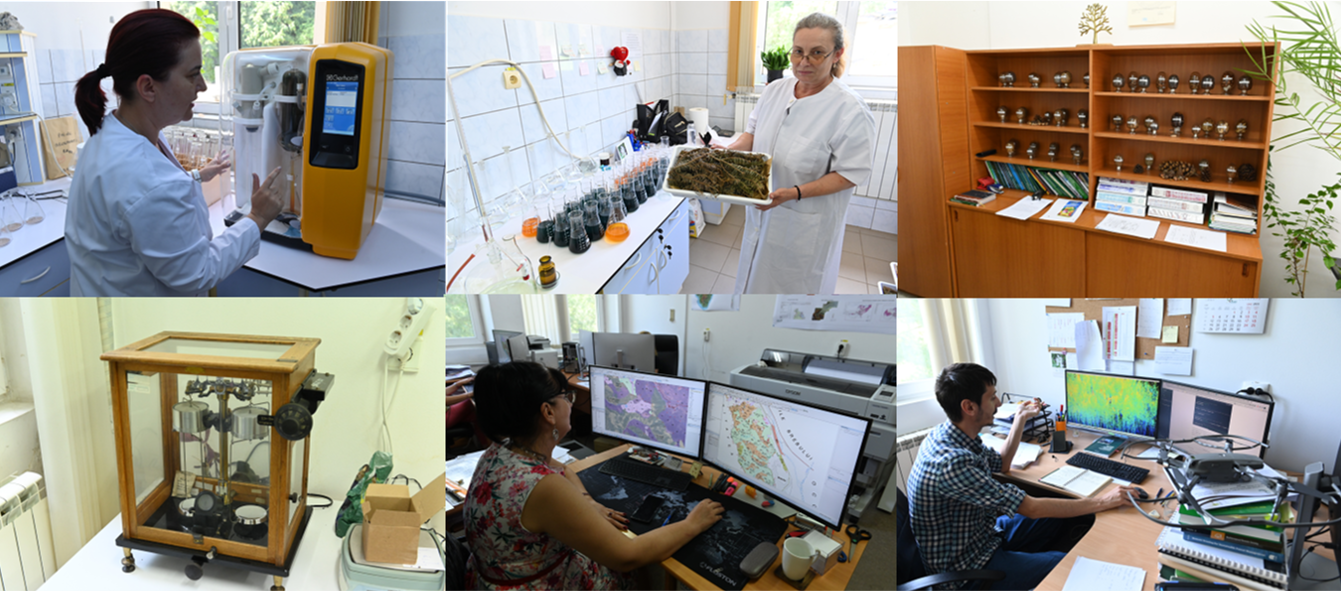
Research-Development infrastructure and services
Research and development infrastructure:
-
Laboratory for determining the quality of forest soils and the nutritional status of trees, internationally intercalibrated, which ensures the performance of chemical and physical analyzes of soil and leaf material samples, collected from the field, by atomic absorption spectrophotometry, inductively coupled plasma emission spectrophotometry-ICP OES, in order to monitor their critical levels regarding the content of total C and N and other micro and macro elements, for the substantiation and elaboration of solutions for the ecological reconstruction of degraded lands, for the restoration of forest vegetation and for quantifying the condition of forests under the action of climate change and atmospheric pollution;
- Laboratory of advanced biotechnologies (in vitro cultures, somatic embryogenesis and tissue cultures) to ensure the production of forest saplings with increased adaptability and resistance to climate changes and extreme vegetation conditions;
-
Seed quality analysis laboratory intended to determine the quality parameters of seed batches, originating from basic materials, intended for use in forestry practice (purity, germination, cultural value, etc.);
- The “Alexandru Beldie” herbarium is a collection indexed in INDEX HERBARIORUM (http://sweetgum.nybg.org/), having the BUCF code along with 17 other herbaria (11th place as number of plates out of the 18 indexed), which belong to institutions of education, research, museums and botanical gardens in Romania. The approximately 70,000 plates (48,000 in systematized folders) found in the herbarium, stored in 30 modules (metal cabinets) with 20 drawers each (600 drawers), cover all categories of plants: species of forestry and ornamental interest , plants from the spontaneous flora, lichens, mosses, ferns, algae, rare, endemic, vulnerable or even extinct plants from the natural area;
- Phytopathology and forest entomology analysis laboratory, for the analysis and monitoring of the action of invasive and/or disruptive biotic agents on forest ecosystems;
- Forestry Remote Sensing, GIS and Digital Cartography Laboratory intended for the development and application of active (ALS and TLS) and passive (satellite images) forest remote sensing technologies, GIS techniques and digital photogrammetry (including UAV image processing), in order to obtain geospatial databases on forest resources , the ecosystem services provided by the forest, the basic genetic materials, the protected natural areas, the damage caused by natural disasters (forest fires, windfalls, etc.), the intensity of atmospheric pollution, the areas affected by insect attacks or desertification, thematic maps in digital format and orthophotoplans specific to the proposed solutions for the management of forests through their management plans;
- Integrated equipment and systems for the collection of soil solution, dry and wet pollutant atmospheric deposition, air quality (active and passive recording of concentrations of O3, NO2, NH3 and other greenhouse gases) of climatic parameters at the level of the forest and in open ground, the level of alluvium on degraded lands, of hydrological parameters in torrential watersheds and for estimating the impact of disruptive pathogens and establishing the prognosis of their action on forests;
- Complex and integrated equipment for continuous recording of tree growth, assessment of wood anatomical structure using non-destructive methods, for the purpose of in situ determination of the quality of trees/groves, for monitoring the bioecology of invasive and/or disruptive biotic agents in forest ecosystems, for the collection of geospatial information at the stand level regarding dendrometric characteristics of trees specific to forest inventory (FieldMap) and stationary terrestrial laser scanning (TLS), for establishing the composition of the stands and the assessment of damages caused by natural disasters (forest fires, windfalls) by using UAVs.
Research and development services:
- The implementation and application of new dendrometric methods and mathematical-auxological models in forestry practice and in the forest management system;
- Implementation and application of technical procedures and practical methods for determining the volume of trees in relation to the measured diameter;
- Identification of changes in forest vegetation coverage caused by wind blows, fires, anthropogenic factors, etc.;
- Biometric characterization of stands by applying methods of processing information obtained from LIDAR images;
- Developing new methods to prevent and reduce the impact of climate change and other biotic and abiotic stress factors on forest biodiversity;
- Assessing and monitoring the diversity of forest ecosystems;
- Elaboration of forest management on ecological and economic bases;
- The development of specialized IT applications for various activities in forestry practice (evaluation of the volume of wood intended for commercialization, development of forestry facilities, etc;);
- Evaluation and analysis of the action of climate changes and the quality of environmental and socio-economic factors on forest ecosystems;
- Increasing the contribution of the forestry sector to rural development and environmental protection;
- The improvement and development of procedures and models for the regulation of the production process, the assessment and forecast of forest resources, their exploitation and use;
- Analysis, evaluation and long-term inter- and multidisciplinary research/monitoring of the state of forest ecosystems and their biodiversity under the action of climate change and other biotic and abiotic stress factors;
- Quantification of the productive, protective and landscape functions of forests and the ecosystem services provided by them;
- Identification of changes in forest vegetation coverage caused by wind blows, fires, anthropogenic factors, etc.;
- Biometric characterization of stands by applying methods of processing information obtained from LIDAR images;
- Developing new methods to prevent and reduce the impact of climate change and other biotic and abiotic stress factors on forest biodiversity;
- Assessing and monitoring the diversity of forest ecosystems;
- Elaboration of forest management on ecological and economic bases;
- The development of specialized IT applications for various activities in forestry practice (evaluation of the volume of wood intended for commercialization, development of forestry facilities, etc;);
- Evaluation and analysis of the action of climate changes and the quality of environmental and socio-economic factors on forest ecosystems;
- Increasing the contribution of the forestry sector to rural development and environmental protection;
- The improvement and development of procedures and models for the regulation of the production process, the assessment and forecast of forest resources, their exploitation and use;
- Analysis, evaluation and long-term inter- and multidisciplinary research/monitoring of the state of forest ecosystems and their biodiversity under the action of climate change and other biotic and abiotic stress factors;
- Quantification of the productive, protective and landscape functions of forests and the ecosystem services provided by them
- Application of technical regulations for the production and use of reproductive forest materials, as well as for the sustainable management of source units;
- Developing studies and creating databases on the genetic diversity and vulnerability of trees;
- Quality certification of forest genetic resources;
- The creation and transfer, for the main species of trees, of reproductive forestry materials (seeds, saplings, cuttings) genetically improved and of high biological value (resistant to diseases, pests, climate change, pollution, etc;);
- Evaluation of the genetic diversity of forest species in order to increase their adaptability to climate changes, reduce genetic isolation and preserve populations of hunting interest;
- Development and implementation of new methods of evaluation and monitoring of the main species of hunting interest;
- Updating the limits of hunting funds according to the legislation in force;
- The foundation and application of keys to credit the hunting funds for the main species of hunting interest;
- Elaboration and implementation of new measures regarding the management of hunting resources;
- The promotion of new technologies for the conservation of endangered species or of special interest;
- Biodiversity conservation and productivity increase in hunting funds;
- Development of measures for the ecological reconstruction of stands affected by biotic and abiotic factors (abnormal drying, degradation, weakening);
- Assessment of the state of resinous stands outside the area, analysis of the behavior of stands installed on degraded land and of American poplar crops;
- Development and transfer of new, specific technologies for the ecological reconstruction of degraded lands in and outside the forest fund;
- Elaboration and application of specific technical guidelines regarding the establishment of protective forest curtains (choice of species, transfer of technologies for their installation and maintenance);
- The development and transfer of new, specific technologies for the care, management and regeneration of forests (management regime, production cycle, silvicultural treatment, age of exploitability, etc;);
- Carrying out studies and creating databases regarding the state of works for the development of torrential hydrographic basins;
- Elaboration of technical guidelines and inventory of works in the improvement perimeters of degraded lands (ruined, affected by landslides, pollution, etc.);
- The implementation of technologies for the establishment of agroforestry crops and the evaluation of the impact on the environment, as well as on the development and diversification of economic activities in the rural environment;
- Adapting the works of care and management of the stands, as well as the regeneration cuts, to the changes in the products of modification of the environmental conditions;
- Monitoring and promoting technical solutions to increase the efficiency and duration of hydrotechnical works;
- Introduction and use of poplar seedlings in plantations;
- Establishment of mother plant cultures at poplar and willow growing units;
- Care, maintenance and management of plantations in order to stimulate fruiting;
- The introduction into culture of poplar and willow species/clones with superior silvoproductive potential and increased resistance to adversities;
- The regeneration under the massif and the introduction to the shelter of the massif of some valuable native species, in stands close to exploitability located on degraded lands;
- Optimizing management measures and exploitation technologies, developed on an ecological basis, to obtain sustainable forest products from certified forests;
- Optimal solutions and specific technologies for the ecological reconstruction of forest lands, forest management planning
- Torrential watersheds reforestation of degraded lands unsuitable for agriculture and
- the realization of the national system of forest curtains
- Development of new, improved methods based on appropriate measures to combat forest diseases and pests;
- Elaboration of technical guidelines regarding the application of phytosanitary treatments with products accepted by the European Union and the evaluation of their effectiveness;
- The development of new methods of forecasting and integrated combating of forest diseases and pests based on the application of appropriate silvicultural measures and the use of biological preparations with low impact on the environment;
- Improving the methods of detecting, monitoring, preventing and combating forest pests and diseases;
- Application of herbicides in nurseries and forestry plantations;
- Monitoring the dynamics of Lymantria monacha populations in the resin groves, in order to signal in a timely manner the appearance of defoliator gradations;
- Combating seminophagous pests of deciduous trees;
- Implementation, use and improvement of the “LYDIS” system for forecasting infestations with the defoliator Lymantria dispar;
- Carrying out works to combat defoliators in deciduous forests;
- Preventing and combating diseases in forestry crops;
- Testing of products for forecasting and preventing insect attacks (synthetic pheromones);
- Development of tested biological products for the control of diseases caused by different pathogens in forests;
- The development and transfer of methodologies for estimating the state of forest health by means of remote sensing and multi-criteria decision systems based on GIS analysis;
- Building geospatial databases and landscape maps in digital format;
- The implementation and exploitation in the GIS system of the management databases in forest management planning.
Contact
Address
Blvd. Eroilor No. 128, Voluntari, Ilfov county, postal code 077190
Secretariat
Telephone/Fax
021-3503238/021-3503245
icas@icas.ro
CEO
Senior researcher II Dr. Davidescu Șerban Octavian
s_davidescu@icas.ro
021-3503238 / inside 102
Scientific director
Senior researcher I Dr. Badea Nicolae Ovidiu
obadea@icas.ro
021-3503238 / inside 102
Technical director of development
Technological development engineer Achim Florin
florin.achim@icas.ro
021-3503238 / inside 146
Technical director of experimentation
Eng. Florescu Cornel Mihail
mihail.florescu@icas.ro
021-3503238 / inside 104
Economic director
Eq. Anghel Anghel
anghel.anghel@icas.ro
021-3503238 / inside 06
Scientific secretary
Senior researcher I Dr. Apostol Ecaterina
ecaterina.apostol@icas.ro
021-3503238 / inside 107
Forest Management Laboratory
Laboratory Head
Senior researcher II Dr. Leca Ștefan
stefan.leca@icas.ro
021-3503238 / inside 136
Forest Biology Laboratory
Laboratory Head
Senior researcher Dr. Mihai Georgeta
georgeta.mihai@icas.ro
021-3503238 / inside 213
Silvotechnics Laboratory
Laboratory Head
Junior researcher Dr. Costăchescu Corneliu Nicolae
cornel.costachescu@icas.ro
021-3503238 / inside 137
Forest Fund Service, Guard and Protection
Head of Service
Dr. Matei Florin Ion
florin.matei@icas.ro
021-3503238
Development workshop
Collective boss
Technological development engineer Achim Viorica
viorica.achim@icas.ro
021-3503238 / inside 230
National Forest Inventory
Head of Service
Technological development engineer/Junior researcher Dr. Marin Gheorghe
gheorghe.marin@icas.ro
021-3503238 / inside 145
Financial Office, Accounting
Office Chief
Eq. Simionescu Mihai
mihai.simionescu@icas.ro
021-3503238 / inside 222
Supply Office, Administrative
Th. Popa Luminița
luminita.popa@icas.ro
021-3503238 / inside 134
Internal Audit Department
Auditor
Dr. ec. Bistriceanu Gheorghe
gheorghe.bistriceanu@icas.ro
Office Programming, Organization, Human Resources
Office Chief
Eq. Popovici Daniela
daniela.popovici@icas.ro
021-3503238 / inside 123
Legal Office
Legal Adviser
Ciobanu Cristiana Nicoleta
cristiana.ciobanu@icas.ro
021-3503238 / inside 207
Informatization department
Network administrator
Budică Ion
ion.budică@icas.ro
021-3503238 / inside 200
Internal Department of Prevention and Protection
Health and Safety Advisor
Postolache Ruxandra Georgiana
ruxandra.postolache@icas.ro
021-3503238 / inside 229
International Relations Office, Marketing and Silvic Publishing House
Marketing specialist
Cosma Eliza Maria
eliza.cosma@icas.ro
021-3503238 / inside 109
Purchases Department
Purchasing Manager
Sing. Vîrban Ionuț
iont.virban@icas.ro
021-3503238 / inside 220



